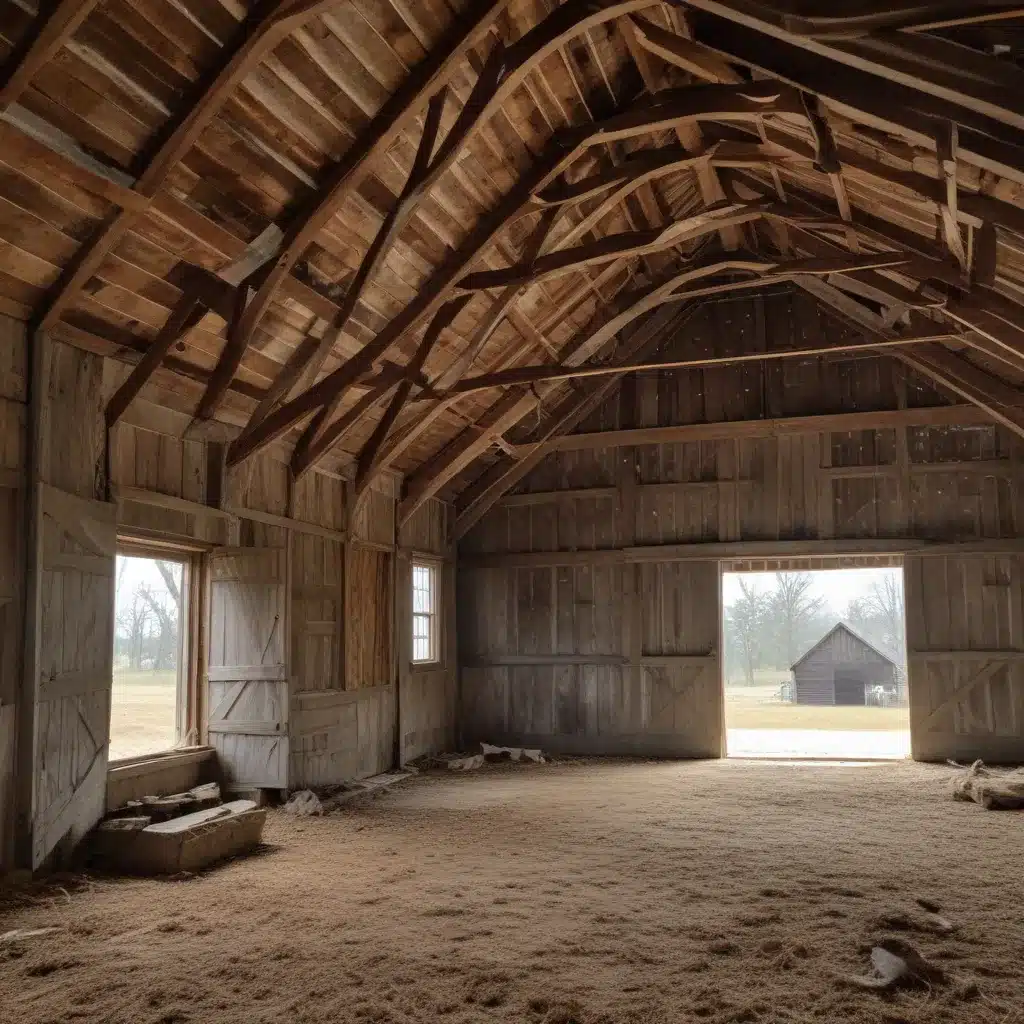
At Crooked Pines Farm, we take great pride in preserving the past and celebrating the rich heritage that defines our land. Nestled in the rolling hills of Georgia, our historic barns stand as a testament to the ingenuity and craftsmanship of generations past, serving as a tangible connection to the agricultural roots that have sustained this region for centuries.
Architectural Significance
These structures, meticulously built using traditional timber framing techniques, embody the very essence of vernacular architecture – a style that emerged organically, shaped by the available materials, climate, and the practical needs of the local farming community. The imposing gambrel roofs, weathered wood siding, and large, sliding doors are all hallmarks of the classic American barn design, reflecting a timeless aesthetic that continues to captivate and inspire visitors from near and far.
Adaptive Reuse
While some of our barns have undergone thoughtful adaptive reuse to accommodate modern farming practices and agritourism activities, we’ve been careful to maintain their original character and charm. By repurposing these historic spaces, we’ve been able to breathe new life into them, transforming them into vibrant hubs for educational programs, farm-to-table dining experiences, and family-friendly events.
Restoration Techniques
Preserving these structures is no small feat, and it requires a meticulous approach that combines traditional restoration techniques with modern materials and methods. Our dedicated team works tirelessly to maintain the structural integrity of the barns, carefully repairing and reinforcing the timber framing, replacing weathered siding, and ensuring the roofs remain watertight. We also make use of sustainable materials, such as reclaimed wood and metal, to honor the original construction while minimizing our environmental impact.
Crooked Pines Farm: A Living Legacy
Crooked Pines Farm has a rich history that dates back to the mid-19th century, when the first settlers arrived in this picturesque corner of Georgia. Over the decades, the land has witnessed the rise and fall of various agricultural pursuits, from cotton and tobacco to the diversified heritage crops and sustainable farming practices that define our modern operations.
Architectural Features
The barns on our property are a direct reflection of this evolving story. Some of the oldest structures, built in the 1860s, feature mortise-and-tenon joints and hand-hewn beams, while later additions showcase the influence of more industrialized construction methods. Together, these buildings create a tapestry of architectural styles that captivates visitors and invites them to explore the farm’s past.
Preservation Efforts
Recognizing the significance of these historic structures, we have made a steadfast commitment to their preservation. Through meticulous maintenance, strategic adaptive reuse, and ongoing restoration projects, we are ensuring that these barns continue to stand as tangible reminders of our agricultural heritage. By doing so, we not only honor the ingenuity of our forebears but also inspire future generations to cherish and protect the land that sustains us.
Traditional Barn Design
The traditional barn design found at Crooked Pines Farm is a testament to the creativity and problem-solving skills of our ancestors. These structures were built to serve practical purposes, such as housing livestock, storing crops, and providing shelter for essential farming equipment. The timber framing techniques employed in their construction, with massive beams and intricate joinery, resulted in buildings that were both sturdy and adaptable, able to withstand the ravages of time and the elements.
Timber Framing
The use of timber framing in our historic barns is a particularly noteworthy aspect of their design. This method, which originated in Europe and was later adopted by American settlers, involved the precise cutting and assembly of large wooden beams, often using hand tools and skilled craftsmanship. The resulting structures were not only aesthetically pleasing but also remarkably resilient, able to stand the test of time without the use of modern fasteners or adhesives.
Vernacular Architecture
The barns at Crooked Pines Farm exemplify the principles of vernacular architecture, a design approach that emerged organically in response to the unique needs and resources of a particular region. These structures were not the product of grand, pre-conceived plans, but rather the result of practical problem-solving and the accumulated knowledge of local builders. The use of locally sourced materials, such as the abundant hardwoods found in our region, further strengthened the connection between the buildings and the land they occupy.
Sustainable Farming
As we look to the future of Crooked Pines Farm, the preservation of our historic barns plays a vital role in our sustainable farming and agritourism efforts. By adaptively reusing these structures, we are not only honoring the past but also finding innovative ways to engage with our community and share the rich agricultural heritage of this region.
Our heritage crops and environmentally conscious farming practices are a natural extension of this commitment to sustainability. By cultivating heirloom varieties and implementing regenerative agriculture techniques, we are not only preserving the diversity and resilience of our land but also connecting our visitors to the timeless rhythms of farm life.
Through educational programs, farm-to-table dining experiences, and hands-on activities, we invite our guests to become active participants in the ongoing story of Crooked Pines Farm. By experiencing the sights, sounds, and flavors of our historic barns and the surrounding landscape, they gain a deeper appreciation for the enduring importance of sustainable agriculture and the vital role that these structures have played in shaping our regional identity.
As we continue to steward this remarkable property, we remain steadfast in our commitment to preserving the past and ensuring a vibrant future for Crooked Pines Farm. By honoring the ingenuity and resilience of our ancestors, we strive to inspire new generations of farmers, educators, and community members to embrace the timeless wisdom of the land and to forge a lasting connection to the rich agricultural heritage that defines this special place.


